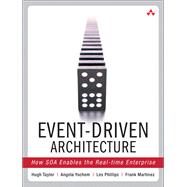Hugh Taylor is a social software evangelist for IBM Lotus Software. He coauthored Understanding Enterprise SOA and has written extensively on Web services and SOA. He holds an MBA from Harvard Business School. Angela Yochem is an executive in a multinational technology company and is a recognized thought leader in architecture and large-scale technology management. Les Phillips, VP, enterprise architecture, at SunTrust Banks Inc., is responsible for defining the strategic and business IT foundation for many areas of the enterprise. Frank Martinez, EVP, product strategy, at SOA Software, is a recognized expert on distributed, enterprise application, and infrastructure platforms. He has served as senior operating executive for several venture-backed firms and helped build Intershop Communications into a multibillion-dollar public company.








